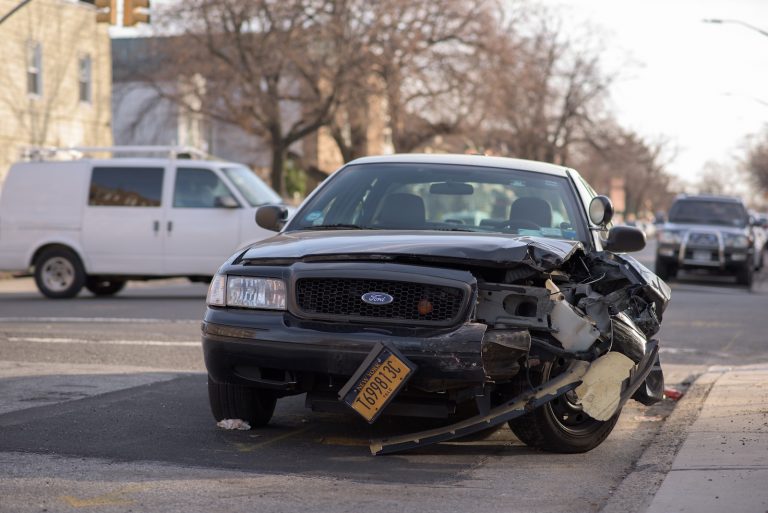Car accidents can occur at any time, regardless of how experienced and vigilant you are on the roads. You can’t control other drivers’ behaviors or actions, and it only takes a minor mistake to cause a serious accident.
Sadly, hundreds of thousands of road traffic accidents occur every year across the globe. We don’t mean to scare you, but it’s important to be aware of the risks you face as a driver so you can keep yourself and your family safe.
Brushing up on your knowledge of road safety and the rules of the road is essential for staying safe on the roads. What’s also important is knowing what to do following a car accident so you can take the right steps to protect yourself physically and legally.
Story Stages
What Should You Do After an Accident on the Roads That Wasn’t Your Fault?
The steps you take following an accident that somebody else caused are crucial in protecting you from wrongful legal claims against you and proving liability. Below, we’ve covered the key steps to take when you’ve been in a car accident that was caused by another driver.
Prioritize Personal Safety
Your safety (and the safety of any of your passengers) should always be your top priority in the immediate moments following a car accident. Regardless of how angry you might be at the other driver’s negligence or how worried you are about the aesthetics of your car, you need to focus on yourself and your family.
Check each person, especially young children, for injuries, including cuts, scrapes, bruises, and visible broken bones. If you or any of your passengers are seriously injured, call the emergency medical services immediately for transportation to the nearest hospital.
Note that not all injuries are visible. One of the people involved in the accident might appear fine on the outside but have serious internal injuries. For this reason, you should always seek medical attention for yourself and your passengers as quickly as possible.
To keep other drivers safe, turn on the emergency hazard lights in your car to alert passers-by about the accident scene.
Take Photographs of Injuries and the Accident Scene
It’s a good idea to take photographs of any injuries that you or your passengers have sustained during the accident to keep as evidence if you decide to claim against the driver responsible for the incident. You can take these photographs on your smartphone.
Take images of vehicle damage, license plates of all vehicles involved in the incident, the conditions of the road, and the general accident scene. Having photographic evidence will be crucial if you hire a car accident lawyer and file a legal claim for compensation.
Exchange Information with the Other Drivers Involved in the Accident
You’ll need to exchange information with the other drivers involved in the accident so you can supply these details to your insurance provider. You’ll need their full names, addresses, phone numbers, and the details of their car insurance providers.
A key piece of information to gather from the other drivers is the type of insurance coverage they have. They may have something called faulty driver inadequate insurance.
If you’re wondering, ‘What is inadequate insurance?’, it refers to when a driver has inadequate insurance or none at all. This leaves you in a sticky situation as, normally, their insurance provider would be the one paying your compensation.
The resolution to this problem depends on which state you live in. It’s best to speak to a car accident lawyer in your local area to get expert guidance on the best steps to take if the other driver doesn’t have adequate car insurance coverage.
Never Admit Fault
This article focuses on the steps you should take following a car accident that wasn’t your fault. However, it’s important to reiterate that you should never admit fault after a road traffic collision, regardless of whether you believe you may have played a role in the incident.
Call the Police
Even if you’ve only been in a minor car accident, you will need to inform the police of the accident. When the police arrive at the scene of the collision, they will ask you and the other drivers involved a variety of questions to assess fault and liability.
They will use the information they gather from you and the other people involved to create an official police report, which may become crucial evidence in the event of a compensation claim via your insurance company.
Contact Your Insurance Provider
Get in touch with your insurance company as soon as you can to let them know about the accident. They may ask for details about the incident and for any evidence you’ve collected at the scene, such as photographs of car accident injuries and vehicle damage.
While you may not remember many details about the traumatic event you’ve been through, it’s important to provide accurate information to your insurer. They will use this information to determine who is liable for the accident.
Your insurance provider may collaborate with the police and the other driver’s insurer. They will exchange and cross-reference information as part of their investigations.
Hire a Car Accident Lawyer
If you’re dealing with issues regarding who is at fault for the accident or the responsible driver won’t admit their own fault in the accident, you may need to contact a car accident lawyer. A qualified attorney will work closely with you to identify liability and negotiate with insurance companies on your behalf, enabling you to take time to recover from your injuries and trauma.
Your lawyer can guide you through the legal process of claiming against another driver for compensation following a road traffic accident. If you want to escalate your case further, they will represent you in court to ensure you get the compensation you deserve.
